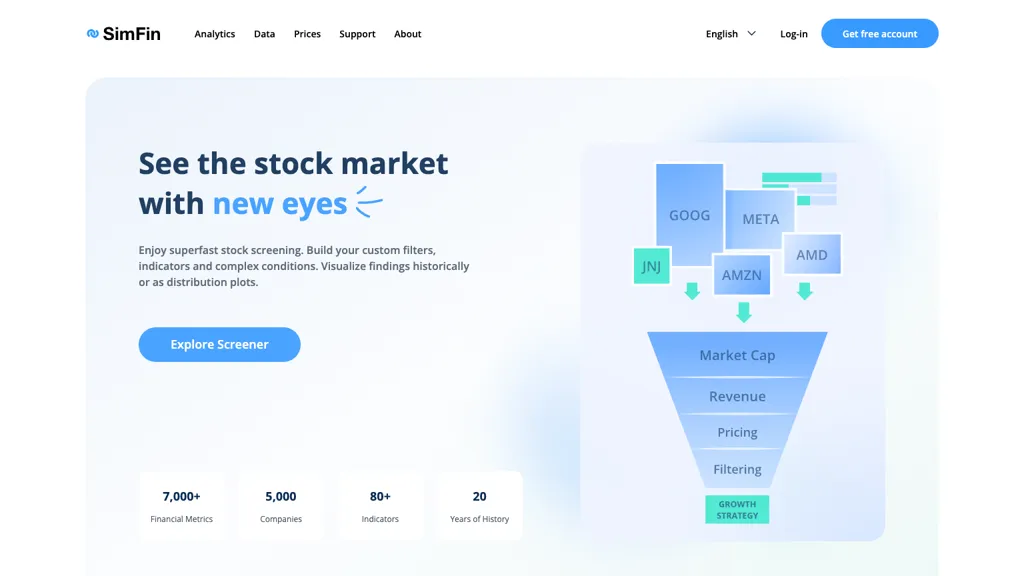20 Recommended Pieces Of Advice For Deciding On AI Stock Analysis Websites
20 Recommended Pieces Of Advice For Deciding On AI Stock Analysis Websites
Blog Article
Top 10 Suggestions For Evaluating The Strategy Customization Of AI stock Analysing Trading Platforms
Strategy customization is a key characteristic of AI platform for predicting and analyzing stocks, as it allows users to adapt the platform to their own specific goals in trading as well as their risk tolerance and market conditions. Platforms that offer powerful customization options will increase the efficiency of your trading. Here are 10 tips to evaluate the customization capabilities of platforms.
1. Evaluate Pre-Built Strategy Templates
A variety of templates: See whether the platform provides an array of pre-designed strategies to suit different styles of trading (e.g. day trading, swing trading, long-term investing).
The user's experience is an excellent indicator.
Performance history: See if you can access historical data of the performance of the pre-built strategies.
2. Create a custom strategy
Drag-and-drop tools: Select platforms that have drag-and-drop interfaces that allow you to easily create customized strategies.
Coding options: For users who are more advanced make sure the platform supports custom-written coding using a proprietary scripting language (e.g. Python, R).
Flexibility: You must be able to establish the entry/exit criteria along with risk management parameters as well as other aspects that are essential to your plan.
3. Check for Backtesting Capabilities
Historical data: Determine whether you have enough records to backtest your strategies.
Modifiable parameters: Make sure you have the ability to alter parameters (e.g., timeframes, indicators) when backtesting.
Performance metrics: Check whether the platform offers detailed performance metrics (e.g., win rate Sharpe ratio drawdown, etc.)) for backtested strategies.
4. Evaluate Real-Time Strategy Testing
Paper trading: Test strategies in real-time using simulation or paper trading.
Live testing Try your strategies out on live markets by using tiny amounts of capital to evaluate their performance.
Real-time adjustment: Determine if it is possible to alter strategies in response to the current market conditions.
5. Assessment of Integration using Technical Indicators
Libraries of indicators: Ensure that your platform comes with a comprehensive collection of tools for technical use (e.g. MACD, RSI and moving averages).
Custom indicators. Ensure that you have the ability to develop or utilize customized indicators as part of your strategy.
Check the combination of indicators.
6. Check for Risk Management Tools
Stop-loss/take-profit: Ensure the platform allows you to set stop-loss and take-profit levels within your strategies.
Size of the position: See whether you have the ability to establish the rules for sizing your position (e.g. fixed amount percent of your portfolio) to control risk.
Risk-reward-ratio: Check the platform's support for setting risk/reward ratios on individual trades or trading strategies.
7. Evaluate Multi-Asset Strategy Support
Asset classes: Verify that the platform offers strategies for multiple asset classes.
Cross-asset Strategies: Determine whether it is possible to create strategies that mix various asset classes.
Market coverage - Verify that the platform is covering the markets you are in (e.g. US and international markets and copyright and more.).
8. Review Automation & Execution
Automated trading: Ensure that the platform can automate execution of strategies based upon defined rules.
Types of orders: Check if your platform supports different types of orders (e.g. market limits, limit and stop) to execute strategies.
Latency Check: Ensure that the platform allows for trades to be executed at minimal latency. This is especially important for high-frequency strategy.
9. Review the Strategies Optimization Tools
Optimization of parameters - Make sure that the platform has tools to optimize the strategy's parameters.
Machine Learning Integration: Find out whether a platform is able to integrate machine learning to refine and optimize strategy.
Scenario evaluation: Determine if your platform can test various strategies to deal with different market scenarios, like bearish, bullish, or volatile.
10. Review User Feedback and Community Support
User reviews: Examine the feedback of users to assess the platform's ability to adapt strategies.
Community forums Find out if there is an active user community who are willing to share their strategies and ideas.
Support resources: Ensure that the platform offers tutorials, webinars, or documents to assist users develop and improve strategies.
Bonus Tips:
Free trial period: You can test out the customization options of the platform using a a demo or free trial.
Scalability: Your platform needs to be able to handle more complex trading strategies as you develop.
Customer support: Determine if the platform can provide assistance with strategy-related issues or queries.
These tips will help you evaluate the customization options of AI trading platforms that analyze and predict stocks. So you can select one that is compatible with your trading goals, and allows you refine and implement strategies. A platform with robust customization capabilities can allow you to adapt to changing market conditions and improve your trading performance. Follow the most popular look at this about best ai trading software for website recommendations including options ai, ai investment platform, ai chart analysis, investing ai, AI stock, trading ai, investing ai, best ai trading app, AI stock, market ai and more.
Top 10 Tips For Evaluating The Educational Resources Of AI stock Predicting/Analyzing Trading Platforms
The users must review the educational materials provided by AI trading and stock prediction platforms to fully know the platform and its functions and to make educated decisions about trading. These are the top 10 suggestions to assess the quality and value of these resources:
1. Complete Tutorials and Guides
Tip: Check if the platform has instructions or user guides designed for beginners and advanced users.
What's the reason? Clear directions will assist users to navigate the platform and better understand it.
2. Webinars and Video Demos
Look out for video demonstrations, webinars or live sessions.
Why? Interactive and visual content can help you comprehend complex concepts.
3. Glossary
Tips - Make sure the platform includes a glossary and/or definitions for the most important AI and finance terms.
Why: This helps all users, but particularly those who are new to the platform, understand terminology.
4. Case Studies and Real-World Examples
TIP: Make sure there are case studies or examples of the AI models used in real world scenarios.
Examples of practical use are used to demonstrate the effectiveness of the platform and allow users to interact with the applications.
5. Interactive Learning Tools
Explore interactive tools, including simulators, quizzes and sandbox environments.
Why Interactive Tools are beneficial: They permit users to try out, test their skills and develop without risking money.
6. Updated content
Tip: Check whether educational materials have been updated to reflect changes in the marketplace, laws or new features.
Why: Outdated or inaccurate information can lead to miscommunications or even improper use of the platform.
7. Community Forums with Support
Look for active community forums and support groups where you can ask questions to other members or share insights.
What's the reason? Expert and peer advice can help students learn and resolve problems.
8. Programs that provide accreditation or certification
Tips: Find out if the platform has accreditation programs or certification courses.
The reasons recognition of formal education increases credibility and inspire users to increase their education.
9. Accessibility and user-friendliness
Tip. Examine whether the educational materials you are making use of are accessible.
The reason is that it's easy for users to learn at their own speed.
10. Feedback Mechanisms for Educational Materials
TIP: Make sure the platform allows users to provide comments on educational material.
Why: User feedback improves the quality and value.
Bonus Tip: Study in various formats
Make sure the platform provides a variety of types of learning (e.g., audio, video, text) to meet the needs of various learning styles.
When you carefully evaluate these options, you will discover if you've got access to high-quality education resources that will assist you in making the most of its potential. Read the best best ai trading platform for more info including chart analysis ai, AI stock investing, AI stock price prediction, free AI stock picker, stocks ai, can ai predict stock market, stocks ai, how to use ai for stock trading, stock trading ai, AI stock prediction and more.